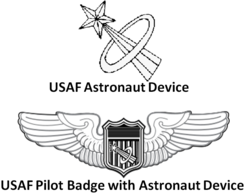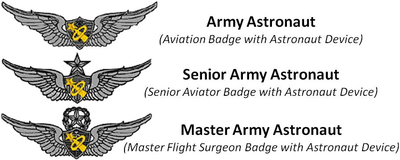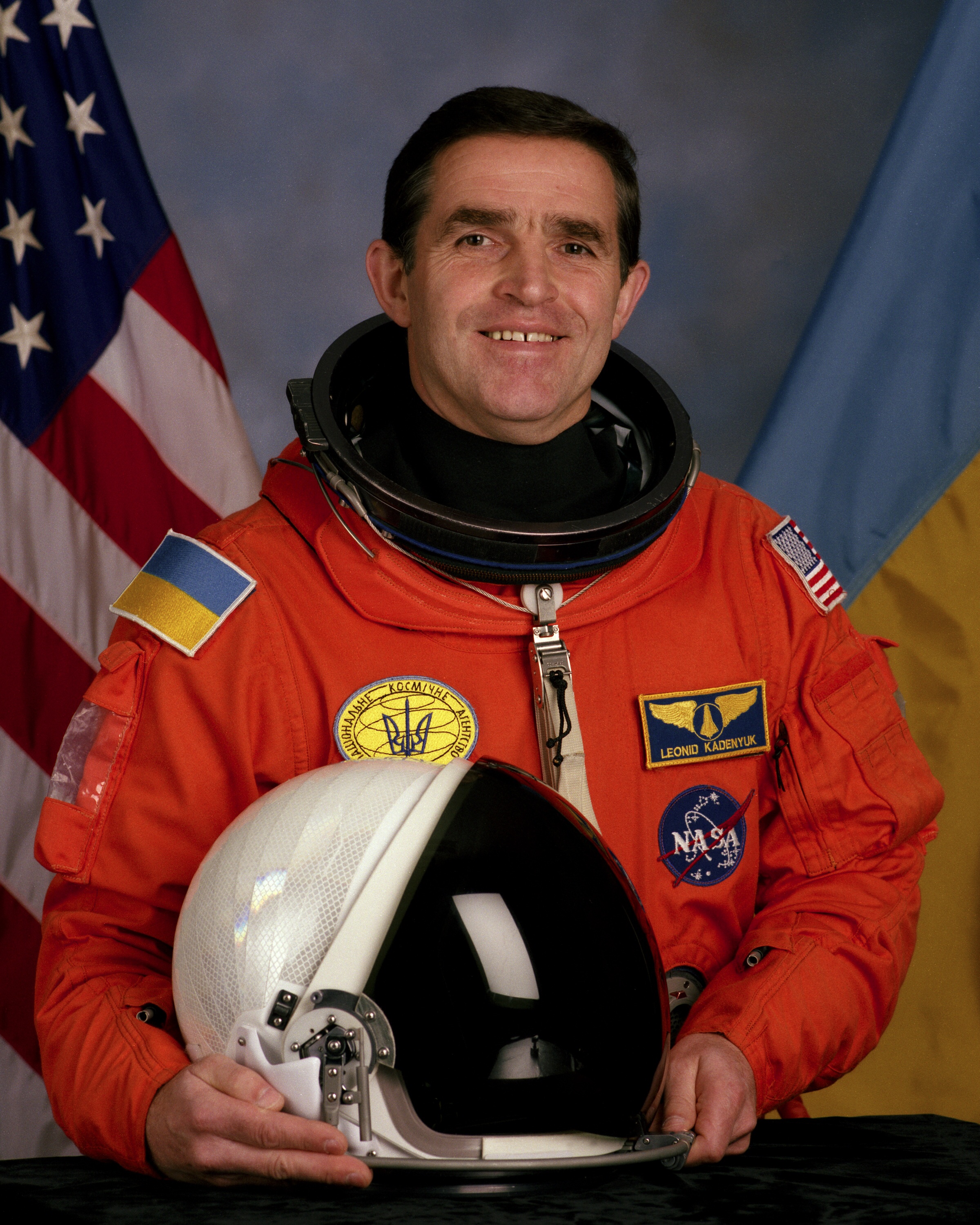
Alan Bartlett Shepard Jr. was an American astronaut. In 1961, he became the second person and the first American to travel into space and, in 1971, he became the fifth and oldest person to walk on the Moon, at age 47.

Charles "Pete" Conrad Jr. was an American NASA astronaut, aeronautical engineer, naval officer, aviator, and test pilot, and commanded the Apollo 12 space mission, on which he became the third person to walk on the Moon. Conrad was selected for NASA's second astronaut class in 1962.

Donald Kent "Deke" Slayton was an American Air Force pilot, aeronautical engineer, and test pilot who was selected as one of the original NASA Mercury Seven astronauts. He went on to become NASA's first Chief of the Astronaut Office and Director of Flight Crew Operations, responsible for NASA crew assignments.

Walter Marty Schirra Jr. was an American naval aviator, test pilot, and NASA astronaut. In 1959, he became one of the original seven astronauts chosen for Project Mercury, which was the United States' first effort to put humans into space. On October 3, 1962, he flew the six-orbit, nine-hour, Mercury-Atlas 8 mission, in a spacecraft he nicknamed Sigma 7, becoming the fifth American and ninth human to travel into space. In December 1965, as part of the two-man Gemini program, he achieved the first space rendezvous, station-keeping his Gemini 6A spacecraft within 1 foot (30 cm) of the sister Gemini 7 spacecraft. In October 1968, he commanded Apollo 7, an 11-day low Earth orbit shakedown test of the three-man Apollo Command/Service Module and the first crewed launch for the Apollo program.
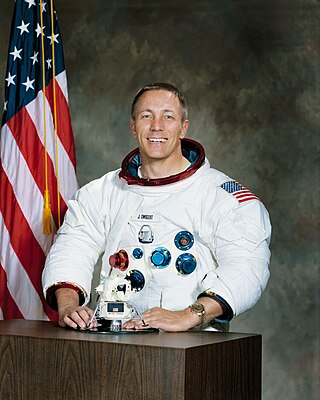
John Leonard Swigert Jr. was an American NASA astronaut, test pilot, mechanical engineer, aerospace engineer, United States Air Force pilot, and politician. In April 1970, as command module pilot of Apollo 13, he became one of 24 astronauts who flew to the Moon. Ironically, due to the "slingshot" route around the Moon they chose to safely return to Earth, the Apollo 13 astronauts flew farther away from Earth than any other astronauts before or since, though they had to abort the Moon landing.

Robert Laurel Crippen is an American retired naval officer and aviator, test pilot, aerospace engineer, and retired astronaut. He traveled into space four times: as pilot of STS-1 in April 1981, the first Space Shuttle mission; and as commander of STS-7 in June 1983, STS-41-C in April 1984, and STS-41-G in October 1984. He was also a part of the Manned Orbiting Laboratory (MOL), Skylab Medical Experiment Altitude Test (SMEAT), ASTP support crew member, and the Approach and Landing Tests (ALT) for the Space Shuttle.
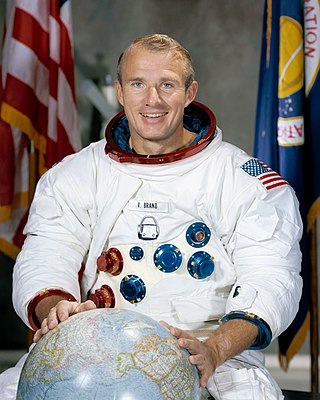
Vance DeVoe Brand is an American naval officer, aviator, aeronautical engineer, test pilot, and NASA astronaut. He served as command module pilot during the first U.S.-Soviet joint spaceflight in 1975, and as commander of three Space Shuttle missions.

Robert Lee Stewart is an American retired military officer and NASA astronaut who was a brigadier general of the United States Army.
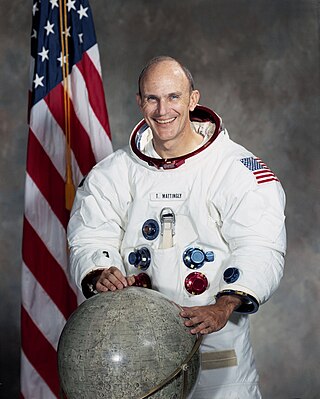
Thomas Kenneth Mattingly II was an American aviator, aeronautical engineer, test pilot, rear admiral in the United States Navy, and astronaut who flew on Apollo 16 and Space Shuttle STS-4 and STS-51-C missions.

Ronald Ellwin Evans Jr. was an American electrical engineer, aeronautical engineer, officer and aviator in the United States Navy, and NASA astronaut. As Command Module Pilot on Apollo 17 he was one of the 24 astronauts to fly to the Moon, and one of 12 people to fly to the Moon without landing.

Patrick Graham Forrester is a NASA astronaut, engineer, and former Chief of the Astronaut Office. He is a retired United States Army colonel and Army aviator. He is married and has two children.

Don Leslie Lind was an American scientist, naval officer, aviator, and NASA astronaut. He graduated from the University of Utah with an undergraduate degree in physics in 1953. Following his military service obligation, he earned a PhD in high-energy nuclear physics from the University of California, Berkeley in 1964.

Thomas Patten Stafford was an American Air Force officer, test pilot, and NASA astronaut, and one of 24 astronauts who flew to the Moon. He also served as Chief of the Astronaut Office from 1969 to 1971.
The Observer Badge is a military badge of the United States armed forces dating from the First World War. The badge was issued to co-pilots, navigators, and flight support personnel who had received a variation in the training required for the standard Pilot's Badge. The Observer Badge survived through the Second World War and into the 1950s, at which time the concept of an Observer Badge was phased out in favor of the modern Aircrew Badge and Navigator-Observer Badges. In addition to wings for Naval Aviators and Naval Flight Officers, the United States Navy still maintains an "Observer Badge" which is issued to flight-qualified mission specialists, such as a select number of meteorologists and intelligence officers in both the U.S. Navy and U.S. Marine Corps. The U.S. Air Force awards its USAF Observer Badge, which is identical to the USAF Navigator Badge, to Air Force officers who have qualified as NASA Space Shuttle Mission Specialists, have flown an actual mission aboard the shuttle and/or the International Space Station and who are otherwise not previously aeronautically rated as an Air Force pilot or navigator.

A United States Aviator Badge refers to three types of aviation badges issued by the United States Armed Forces, those being for Air Force, Army, and Naval aviation.
The Navigator Badge is a military qualification badge of the United States Air Force which was first created during the Second World War. The current USAF badge is designated by Air Force Instructions as the Navigator/Observer Badge and is issued to rated officers in both rating categories. In 2009, it was renamed as the Combat Systems Officer badge.

Insignias and badges of the United States Navy are military badges issued by the United States Department of the Navy to naval service members who achieve certain qualifications and accomplishments while serving on both active and reserve duty in the United States Navy. Most naval aviation insignia are also permitted for wear on uniforms of the United States Marine Corps.

Insignia and badges of the United States Marine Corps are military "badges" issued by the United States Department of the Navy to Marines who achieve certain qualifications and accomplishments while serving on both active and reserve duty in the United States Marine Corps.
The Aircrew Badge, commonly known as Wings, is a qualification badge of the United States military that is awarded by all five branches of armed services to personnel who serve as aircrew members on board military aircraft. The badge is intended to recognize the training and qualifications required by aircrew of military aircraft. In order to qualify as an aircrew member and receive the Aircrew Badge, such personnel typically undergo advanced training in aircraft in-flight support roles.

U.S. Air Force aeronautical ratings are military aviation skill standards established and awarded by the United States Air Force for commissioned officers participating in "regular and frequent flight", either aerially or in space, in performance of their duties. USAF aeronautical badges, commonly referred to as "wings" from their shape and their historical legacy, are awarded by the Air Force in recognition of degrees of achievement and experience. Officers earning these badges and maintaining their requirements are classified as rated officers and receive additional pay and allowances.

